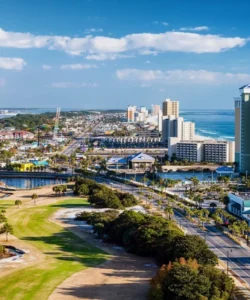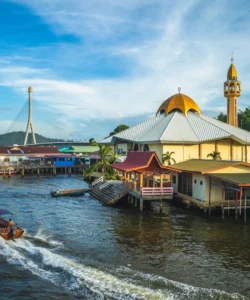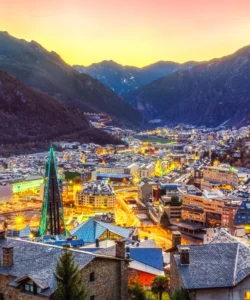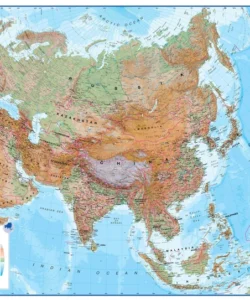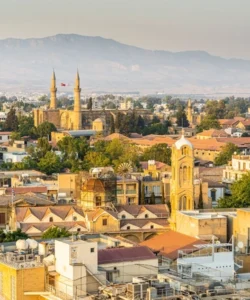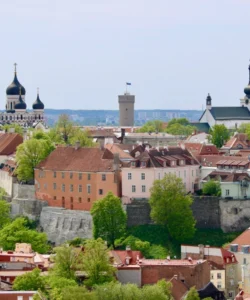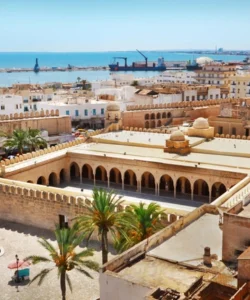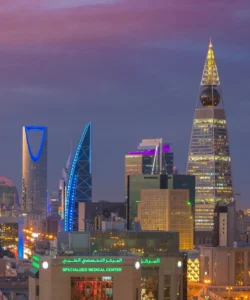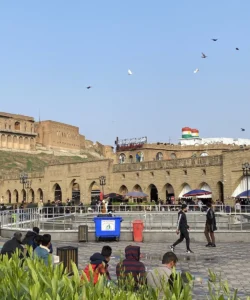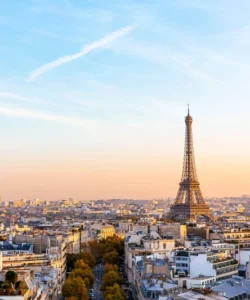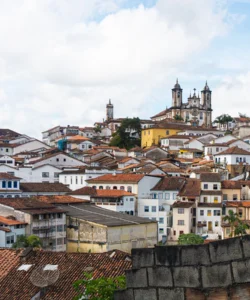The British Virgin Islands (BVI) are a British Overseas Territory in the Caribbean, located to the east of the U.S. Virgin Islands. Comprising over 50 islands and cays, only about 16 of which are inhabited, the BVI are renowned for their idyllic sailing conditions, stunning pristine beaches, secluded coves, and vibrant coral reefs, making them a premier destination for yachting and watersports.
Listen to an introduction about British Virgin Islands
![]()
Area and Population:
The total land area of the British Virgin Islands is approximately 151 sq. km (58 sq. mi). Tortola is the largest island, followed by Virgin Gorda, Anegada, and Jost Van Dyke. As of 2023, the estimated population was around 31,500 people.
Language:
The official language is English, and it is universally spoken.
Currency:
The official currency is the United States Dollar (USD). No other currencies are accepted.
Religion:
The predominant religion is Christianity, with various denominations present, including Methodist, Anglican, Church of God, Seventh-day Adventist, Baptist, and Roman Catholic.
Capital:
The capital city is Road Town, located on Tortola. It is the largest city and the main commercial hub.
Major Islands/Towns:
Besides Road Town on Tortola, other significant populated islands and their main settlements include Spanish Town on Virgin Gorda, The Settlement on Anegada, and Great Harbour on Jost Van Dyke.
Attractions:
The BVI’s attractions are heavily centered around its natural beauty and marine environment:
- The Baths (Virgin Gorda): A geological wonder featuring enormous granite boulders forming natural grottoes, tidal pools, and caves that are perfect for exploring, swimming, and snorkeling.
- Jost Van Dyke: Known as the “Party Island,” famous for its laid-back atmosphere, beach bars like Foxy’s and Soggy Dollar Bar (home of the Painkiller cocktail), and beautiful White Bay.
- Anegada: A unique coral atoll, very flat compared to the other volcanic islands, renowned for its pristine, long white-sand beaches (like Cow Wreck Beach and Loblolly Bay), excellent snorkeling and diving on its Horseshoe Reef, and fresh lobster.
- Norman Island: Believed to be the inspiration for Robert Louis Stevenson’s “Treasure Island,” it offers excellent snorkeling and diving at the Caves, a popular anchorage.
- Sailing and Yachting: The BVI are considered one of the world’s premier sailing destinations due to calm waters, consistent trade winds, short distances between islands, and numerous protected anchorages.
- Snorkeling and Diving: Abundant coral reefs, shipwrecks (like the Wreck of the Rhone), and diverse marine life make for exceptional underwater exploration.
- Smuggler’s Cove (Tortola): A beautiful, secluded beach often considered one of Tortola’s best.
- Sage Mountain National Park (Tortola): The highest point in the BVI, offering hiking trails through a small remnant of the original rainforest.
Natural Wonders:
The BVI’s natural wonders are primarily its geological formations and extensive marine ecosystems:
- The Baths: The most iconic natural wonder, unique granite boulder formations.
- Horseshoe Reef (Anegada): One of the largest barrier reefs in the Caribbean, providing a rich habitat for marine life.
- Virgin Gorda Peak: Offering panoramic views of the surrounding islands.
- Lush, Hilly Landscapes: Particularly on Tortola and Virgin Gorda, providing scenic vistas and diverse flora.
Architecture:
BVI architecture generally reflects a blend of traditional Caribbean vernacular styles, designed for tropical living, and more modern resort and villa designs.
- Traditional: Characterized by colorful wooden houses with verandas, louvered windows for ventilation, and often steeply pitched roofs to manage rainfall.
- Resort Style: Newer constructions for tourism often incorporate open-plan designs, natural materials, and large windows or sliding doors to blur the lines between indoor and outdoor living, maximizing views. They blend into the landscape with a focus on luxury and comfort.
- Road Town: Has a mix of modern commercial buildings and some older colonial-era structures.
Roads:
The main islands (Tortola, Virgin Gorda, Jost Van Dyke, and Anegada) have paved roads, but they can be narrow, winding, and very steep, especially in the hilly interior. Driving is on the left-hand side of the road. While generally well-maintained in tourist areas, some roads can be rough. Rental cars are available, but many visitors prefer taxis or ferrying between islands.
Hotels:
The BVI offers a range of accommodations, from exclusive luxury resorts and private villas to charming guesthouses and bareboat yacht charters.
- Rosewood Little Dix Bay (Virgin Gorda): A legendary luxury resort known for its pristine crescent beach.
- The Bitter End Yacht Club (Virgin Gorda): (Re-opened after hurricane damage, iconic sailing resort).
- Saba Rock (North Sound, Virgin Gorda): A tiny island resort and restaurant popular with yachties.
- Necker Island (Sir Richard Branson’s private island): Exclusive, ultra-luxury accommodation.
- Peter Island Resort & Spa: (Currently closed for renovations but a major luxury property when open).
- Long Bay Beach Resort (Tortola): Offers beachfront accommodation.
- Sugar Mill Hotel (Tortola): A historic boutique hotel with a rich past.
Restaurants:
The culinary scene in the BVI is diverse, ranging from upscale fine dining in resorts to casual beachside “shacks” serving fresh local fare. Seafood is a prominent feature.
- Foxy’s Tamarind Bar (Jost Van Dyke): World-famous beach bar known for its lively atmosphere, live music, and Caribbean BBQ.
- Soggy Dollar Bar (Jost Van Dyke): Home of the original “Painkiller” cocktail, a must-visit beach bar accessible only by swimming ashore.
- The Restaurant at Rosewood Little Dix Bay (Virgin Gorda): Offers sophisticated international cuisine.
- The Dove Restaurant (Tortola): Known for its fine dining and extensive wine list.
- Anegada Lobster Festival: An annual event celebrating the island’s famous fresh lobster.
- Da Best Stop (Tortola): Popular for authentic local food.
- Many establishments offer fresh grilled fish, conch, and other seafood, often with a view of the ocean.
Cuisine:
BVI cuisine is a delightful blend of Caribbean, Creole, and international influences, with a strong emphasis on fresh seafood and local produce.
- Fresh Lobster: Especially from Anegada, often grilled or stewed.
- Conch: Prepared in various ways, including fritters, stewed, or in salads.
- Fish: Grilled, fried, or stewed, often “escovitch style” (marinated and fried).
- Roti: A flatbread wrapped around a savory filling, often chicken, beef, or vegetables.
- Patties: Savory pastries filled with meat or vegetables.
- Fish and Fungi: A common local dish of stewed fish with a cornmeal side.
- Curried Dishes: Reflecting Indian and West Indian influences.
- Fresh Tropical Fruits: Mangoes, papayas, soursop, and guava are abundant.
- Rum and Rum-based Drinks: The “Painkiller” is the signature cocktail of the BVI, a blend of dark rum, cream of coconut, pineapple juice, and orange juice, topped with fresh nutmeg.



















